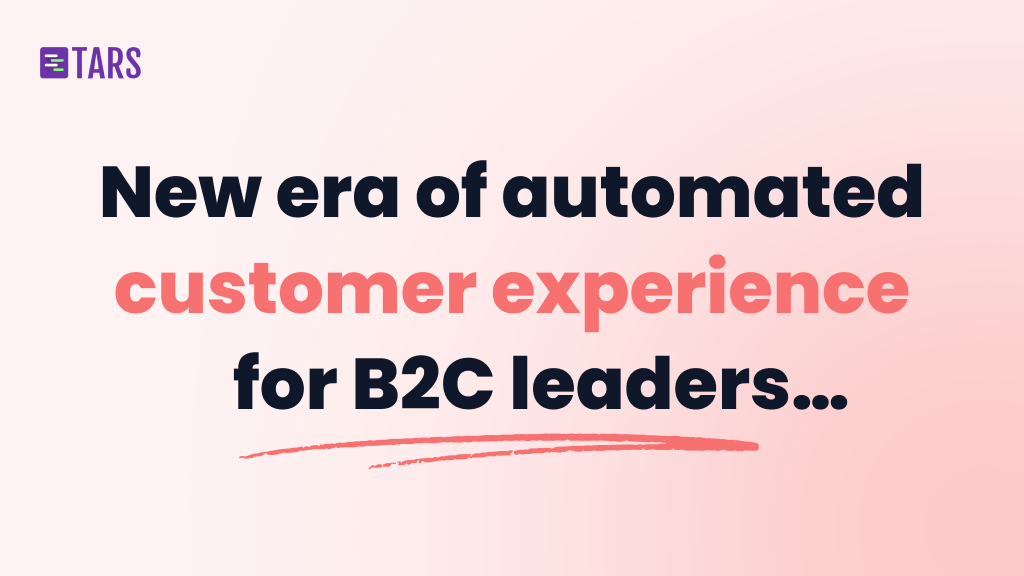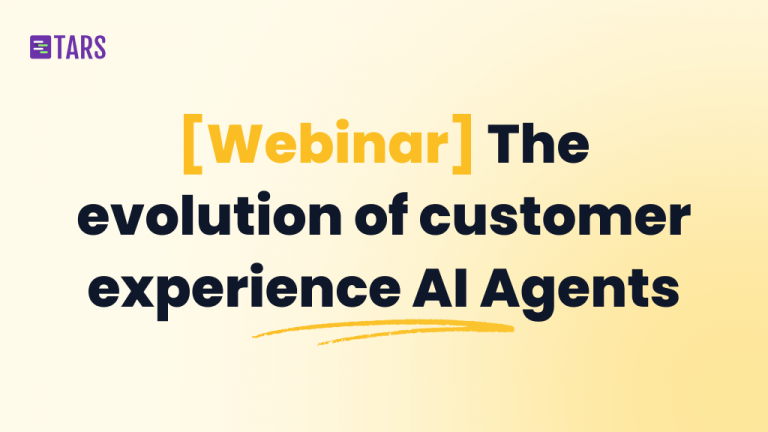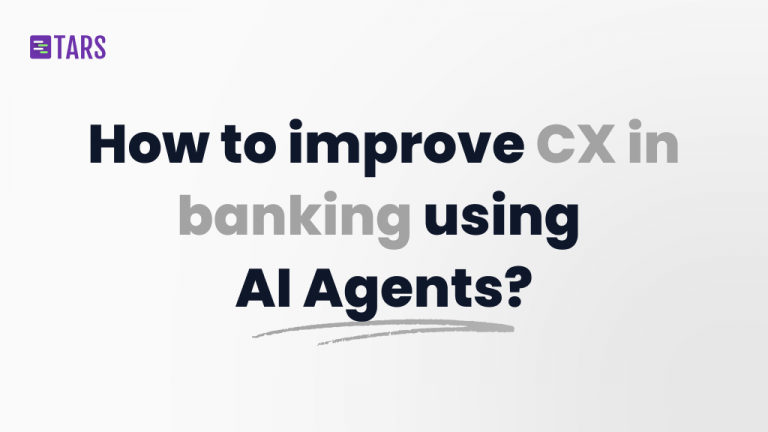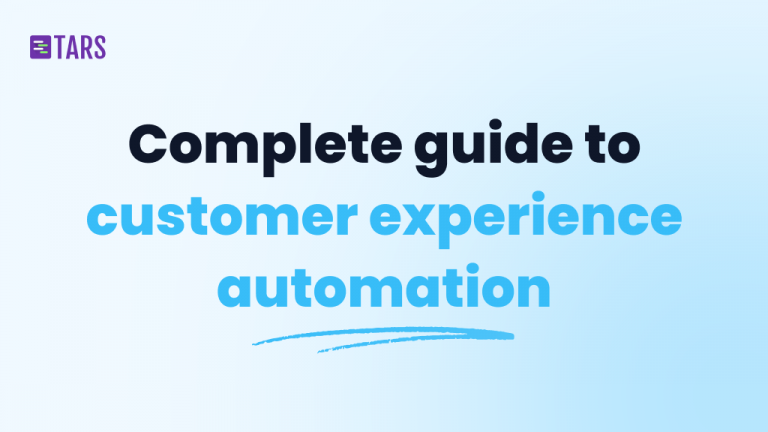The new era of automated customer experience: Why enterprise B2C leaders are rethinking everything

When your customer base numbers in the hundreds of thousands or millions, customer experience stops being a department and becomes an existential challenge. Banks field thousands of balance inquiries daily. Insurance companies navigate complex claims processes across multiple touchpoints. Government agencies serve diverse populations with varying needs and literacy levels. The common thread? They’re all drowning in volume while their customers expect Amazon-level responsiveness.
Traditional customer experience strategies weren’t built for this scale. You’ve likely tried the usual playbook: hire more agents, implement rigid chatbots that frustrate more than they help, or resign yourself to long wait times and declining CSAT scores. Meanwhile, your competitors are discovering something different: an automated customer experience that actually works.
The breaking point: Why traditional CX can’t scale
Here’s the uncomfortable truth facing enterprise B2C organizations: your customer experience model has a ceiling, and you’ve probably hit it.
Consider the math. A typical customer service agent handles 30-50 interactions per day. To serve 100,000 customer inquiries monthly, you need roughly 70-100 full-time agents. Double your customer base? Double your headcount. Launch in a new region? Hire and train an entirely new team. Experience a surge during tax season, open enrollment, or a product launch? Hope your hiring pipeline was six months ahead.
This linear scaling model worked when customer expectations moved slowly. But today’s B2C landscape operates differently. Customers expect instant responses at 2 AM. They want seamless experiences across web, mobile, WhatsApp, and phone. They demand personalized answers based on their account history, not generic FAQs. And they’ll switch to a competitor if you can’t deliver.
Traditional CX vs. Automated CX: The Reality
| Aspect | Traditional Model | Automated CX |
|---|---|---|
| Availability | Business hours only (8-10 hours/day) | 24/7 across all channels |
| Scaling | Linear: 2x volume = 2x headcount | Non-linear: handles volume spikes without hiring |
| Response time | Minutes to hours (queue dependent) | Instant, regardless of volume |
| Consistency | Varies by agent skill and fatigue | Uniform quality across all interactions |
| Cost per interaction | $8-15 per ticket | $0.50-2 per automated resolution |
| Agent focus | 80% routine, 20% complex | 20% routine, 80% complex/high-value |
The breaking point isn’t just operational; it’s strategic. While your team is buried in routine inquiries about password resets, account balances, and policy details, they have no bandwidth for the complex issues that actually require human expertise. Your best people are trapped in volume, and your worst customer experiences are getting worse.
Enterprise automated CX use cases
What does automated customer experience actually handle in practice? Here are the most common high-impact use cases across enterprise B2C industries:
Financial Services & Banking
High-volume inquiries:
- Account balance checks and transaction history
- Card activation and PIN resets
- Fund transfers and payment confirmations
- Branch/ATM location assistance
Complex processes:
- Fraud alert responses with account verification
- Loan application status updates with document tracking
- Multi-step account opening across products
- Dispute resolution with evidence collection
Insurance
High-volume inquiries:
- Policy coverage questions and premium calculations
- Claims status tracking across multiple touchpoints
- Payment due dates and billing inquiries
- Provider network searches
Complex processes:
- FNOL (First Notice of Loss) intake with photo/document submission
- Mid-term policy adjustments (address changes, coverage updates)
- Multi-policy quote comparisons
- Claim appeals with documentation requirements
Government & Public Services
High-volume inquiries:
- Application status checks (permits, licenses, benefits)
- Eligibility verification for programs
- Payment and fee information
- Office hours and location assistance
Complex processes:
- Multi-language support for diverse populations
- Document submission and verification workflows
- Appointment scheduling across departments
- Step-by-step application guidance with error prevention
What automated customer experience actually means (and why most get it wrong)
When most enterprises hear “automated customer experience,” they picture the frustrating IVR systems and rigid chatbots they’ve already tried. You know the ones: they work great in demos but collapse under real-world complexity. Customers rage-quit after three failed attempts to reach a human. Your team spends more time fixing bot mistakes than they save.
That’s not automation. That’s digitized friction.
True automated customer experience isn’t about replacing humans with scripts. It’s about deploying AI Agents that handle the full spectrum of customer interactions, from simple FAQs to complex, multi-step processes, with the intelligence and reliability your brand demands.
The difference comes down to three critical capabilities most solutions lack:
Reliable knowledge retrieval: Your customers don’t ask textbook questions. They ask “Why was I charged $47.82 on March 3rd?” or “Can I adjust my coverage mid-term if I move states?” Generic AI models hallucinate answers or provide irrelevant information. Enterprise-grade automated CX requires AI that can ingest your specific knowledge base (policies, procedures, product details) and retrieve accurate, contextual answers every single time.
True no-code flexibility: Enterprise B2C organizations have complex, evolving needs. Your insurance products change quarterly. Regulatory requirements shift. Customer journeys vary by segment. If modifying your AI Agent requires a developer sprint and a three-week deployment cycle, you don’t have automation. You have a new bottleneck. Real automated customer experience means business teams can build, test, and iterate solutions themselves.
Enterprise-grade integration: Your customer data lives across Salesforce, Zendesk, your core banking system, payment processors, and dozens of other tools. An AI Agent that can’t access and act on this data is just an expensive FAQ. Automated CX that drives real business value requires seamless integration with your existing tech stack, not a rip-and-replace overhaul.
Most “AI-powered customer service” solutions nail one of these three. Enterprise automated customer experience requires all three, working together reliably at scale.
The innovation shift: From cost center to competitive advantage
Forward-thinking B2C enterprises are discovering something remarkable: automated customer experience isn’t just about efficiency. It’s about creating capabilities that were previously impossible.
Consider what happens when AI Agents handle 80% of routine interactions reliably. Suddenly, your human team can focus entirely on high-value situations: complex claims, relationship building with high-net-worth customers, or proactive outreach to at-risk accounts. Your customer experience doesn’t just get faster. It gets better.
Or think about 24/7 availability across channels. When customers can resolve issues instantly via WhatsApp at midnight, they’re not just satisfied. They’re impressed. Your brand becomes the one that “just works,” while competitors are stuck with business hours and phone trees.
The most sophisticated B2C organizations are going further. They’re using automated customer experience for customer acquisition, not just support. AI Agents that can qualify leads, explain complex products, and guide prospects through applications (all while your sales team sleeps) transform CX from a cost center into a revenue driver.
This is the shift from defensive automation (handling volume) to offensive automation (creating competitive differentiation). And it’s happening faster than most enterprises realize.
Building automated CX that actually works at enterprise scale
The gap between pilot projects and production-ready automated customer experience is where most enterprises stumble. A chatbot that handles 100 conversations in testing behaves very differently under 10,000 daily interactions across eight channels and three languages.
Enterprise-grade automated CX requires thinking about reliability differently:
Knowledge base architecture: Your AI Agents are only as good as the knowledge they can access. This means treating knowledge management as a strategic priority, not something you’ll “clean up later.” The best implementations start with comprehensive knowledge ingestion: product documentation, policy libraries, process guides, historical tickets, and regulatory requirements. But ingestion is just step one. The real work is ensuring your AI can retrieve the right information contextually. When a customer asks about “coverage,” does that mean health insurance, auto insurance, or something else based on their account? Reliable automated CX handles this ambiguity intelligently.
Continuous evaluation and improvement: Here’s what separates pilot projects from production systems: obsessive measurement. You need to know not just how many conversations your AI Agents handle, but how well they handle them. Are customers satisfied? Where do conversations break down? Which knowledge gaps cause the most failures? Enterprise automated CX platforms provide built-in analytics and AI evaluation frameworks that surface these insights automatically. You can’t improve what you don’t measure, and you can’t scale what you can’t improve.
Omnichannel consistency: Your customers don’t think in channels. They think in problems to solve. A customer might start on your website, continue via WhatsApp, and finish with a phone call. If your automated experience can’t maintain context across these touchpoints, you’re creating frustration, not solving it. True enterprise automated CX means your AI Agents work consistently whether customers reach you through web chat, mobile apps, social media, or messaging platforms, with full conversation history and context preserved.
Integration at scale: The promise of 600+ tool integrations isn’t about collecting logos. It’s about meeting enterprises where they are. Your CX stack is complex because your business is complex. An automated customer experience that requires ripping out existing systems is an automation that never launches. The platforms winning at enterprise scale plug into your existing infrastructure: CRM systems, helpdesk software, payment processors, identity management, analytics tools, and industry-specific platforms. This isn’t a nice-to-have. It’s table stakes for production deployment.
Real-world impact: Automated CX in action
- UCI Paul Merage School of Business automated 66% of customer service conversations.
- American Express automated 49.3% of conversations using Tars AI Agents.
- VM Group’s AI Agent successfully deflected 45% of support requests, significantly reducing the workload on the member engagement team and improving response times for more complex inquiries.
Your 90-day implementation roadmap
The enterprises seeing transformative results from automated customer experience didn’t get there with perfect plans. They got there by starting focused, learning quickly, and scaling systematically.
Days 1-30: Foundation & Quick Wins
Week 1-2: Discovery & Planning
- ✅ Audit your top 20 inquiry types by volume (use ticket system data)
- ✅ Interview 5-10 frontline agents about repetitive questions
- ✅ Identify 3-5 high-volume, low-complexity use cases to automate first
- ✅ Set baseline metrics: current CSAT, average response time, cost per ticket
- ✅ Map current customer journey touchpoints and pain points
Week 3-4: Knowledge Base Preparation
- ✅ Gather documentation: FAQs, process guides, policy documents, training materials
- ✅ Identify knowledge gaps (questions agents answer that aren’t documented)
- ✅ Prioritize knowledge creation for your target use cases
- ✅ Define escalation triggers: when should AI hand off to humans?
Target outcome: Clear automation roadmap + knowledge base ready for ingestion
Days 31-60: Build, Test & Soft Launch
Week 5-6: AI Agent Development
- ✅ Ingest knowledge base into TARS AI platform
- ✅ Design conversation flows for 3-5 target use cases
- ✅ Configure integrations with CRM, helpdesk, and business systems
- ✅ Set up analytics dashboards to monitor performance
- ✅ Train agents on escalation protocols and how to use insights
Week 7-8: Internal Testing & Refinement
- ✅ Run AI Agent through 50+ test scenarios (edge cases, angry customers, ambiguous questions)
- ✅ Have support team interact with AI as if they’re customers
- ✅ Identify failure patterns and refine knowledge base
- ✅ Soft launch to 10-20% of traffic on lowest-risk channel
- ✅ Monitor daily: automation rate, escalations, CSAT, failure reasons
Target outcome: AI Agent handling 40-50% of test interactions successfully
Days 61-90: Scale & Optimize
Week 9-10: Progressive Rollout
- ✅ Analyze soft launch data: where does AI succeed/fail?
- ✅ Expand to 50% of traffic as confidence builds
- ✅ Add second channel (e.g., if you started with web chat, add WhatsApp)
- ✅ Weekly iteration: fix top 5 failure patterns each week
- ✅ Begin measuring cost per resolution impact
Week 11-12: Full Production & Expansion Planning
- ✅ Scale to 100% traffic on initial channels
- ✅ Target: 60-70% automation rate for focus use cases
- ✅ Document lessons learned and best practices
- ✅ Identify next 5 use cases to automate based on data
- ✅ Calculate ROI and present results to leadership
Target outcome: Production-ready automated CX handling 60%+ of inquiries in target categories
Critical Success Factors
Do this:
- Start with boring, high-volume use cases (password resets, balance inquiries)
- Measure obsessively from day one
- Iterate weekly based on real conversation data
- Celebrate early wins with your team
Avoid this:
- Trying to automate everything at once
- Launching without proper testing
- Setting “fully automated” as the goal (70-80% is excellent)
- Implementing without agent buy-in
The no-code advantage: Speed and agility at enterprise scale
There’s a reason traditional enterprise software takes months to implement and weeks to modify: complexity gets hardcoded into systems that require developers for every change. This creates a fundamental tension in automated customer experience. Your business moves fast. New products launch, policies change, customer needs evolve. But your CX automation can’t keep pace if every iteration requires IT sprints.
No-code AI Agent builders solve this differently. Business teams who understand customer journeys and pain points can design, test, and deploy automated experiences themselves. Need to add a new product to your AI Agent’s knowledge base? Done in hours, not weeks. Want to A/B test different conversation flows? Launch variants today and measure results tomorrow. Discovered a gap in how your Agent handles a specific edge case? Fix it immediately.
This agility compounds over time. Organizations that can iterate quickly learn faster, optimize more effectively, and stay ahead of customer expectations. Those stuck in traditional development cycles fall perpetually behind, not because their initial solution was wrong, but because they couldn’t adapt fast enough when reality diverged from plan.
For enterprise B2C organizations serving millions of customers across diverse segments, this speed isn’t a luxury. It’s competitive survival.
The future of B2C customer experience is already here
While some enterprises are still debating whether to explore automated customer experience, others are already realizing its full potential. They’re serving millions of customers with response times measured in seconds, not hours, maintaining high satisfaction scores while reducing operational costs by 60% or more. The technology that enables this isn’t theoretical. It’s production-ready, enterprise-tested, and delivering results today. The question isn’t whether automated customer experience will transform B2C industries like banking, insurance, and government services. It’s whether your organization will lead this transformation or scramble to catch up.
What separates leaders from laggards isn’t budget or technical sophistication. It’s the willingness to rethink what customer experience can be when you combine the scale of automation with the reliability of enterprise-grade AI Agents.
The ceiling on your customer experience capacity isn’t fixed. It’s a choice.
Ready to see what automated customer experience looks like at enterprise scale? Tars AI helps organizations deploy reliable AI Agents that handle complex customer interactions across channels, with no-code building, 600+ integrations, and enterprise-grade knowledge retrieval.
A writer trying to make AI easy to understand.
- The breaking point: Why traditional CX can’t scale
- Traditional CX vs. Automated CX: The Reality
- Enterprise automated CX use cases
- Financial Services & Banking
- Insurance
- Government & Public Services
- What automated customer experience actually means (and why most get it wrong)
- The innovation shift: From cost center to competitive advantage
- Building automated CX that actually works at enterprise scale
- Real-world impact: Automated CX in action
- Your 90-day implementation roadmap
- Days 1-30: Foundation & Quick Wins
- Days 31-60: Build, Test & Soft Launch
- Days 61-90: Scale & Optimize
- Critical Success Factors
- The no-code advantage: Speed and agility at enterprise scale
- The future of B2C customer experience is already here


Build innovative AI Agents that deliver results
Get started for freeRecommended Reading: Check Out Our Favorite Blog Posts!

[Webinar] The evolution of customer experience AI: From rigid chatbots to intelligent AI

How to improve customer experience in banking using AI Agents?

Customer experience automation: The complete guide to CXA in 2025

Our journey in a few numbers
With Tars you can build Conversational AI Agents that truly understand your needs and create intelligent conversations.
years in the conversational AI space
global brands have worked with us
customer conversations automated
countries with deployed AI Agents